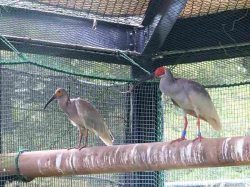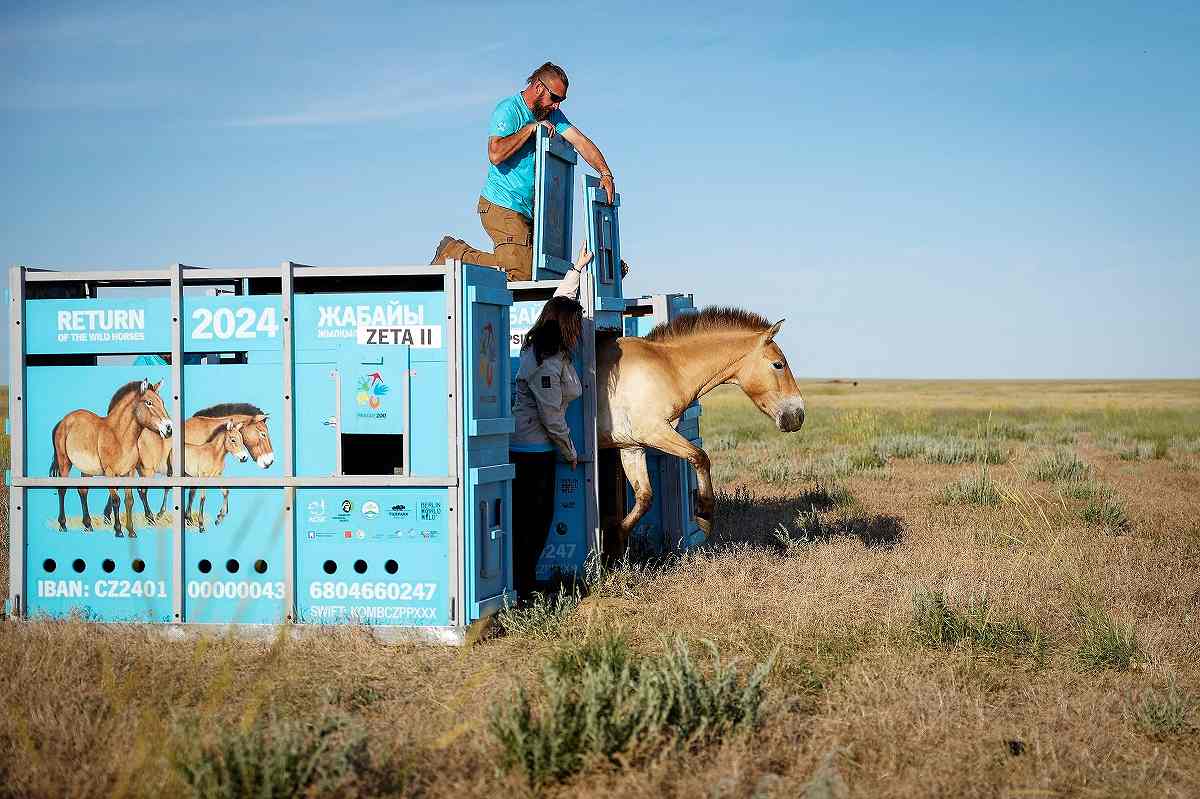
A horse leaves its container after being released into an acclimatization enclosure at the center.
16:25 JST, June 21, 2024
ALTYN DALA, Kazakhstan (Reuters) — Przewalski’s horses have returned to the steppes of Kazakhstan after nearly 200 years, part of an ambitious scheme to reintroduce the world’s last wild horses to their original habitats.
The endangered sandy brown horses once roamed across Central Asia. They were named after Russian geographer Nikolai Przewalski, who discovered them in the late 19th century, by which time their range had been reduced to only one part of western Mongolia.
Now, the Prague Zoo in the Czech Republic, which manages the studbook for the species, wants to begin returning them to the Altyn Dala, or Golden Steppe, region of central Kazakhstan, a vast area of grassland and wetlands covering some 7,000 square kilometers.
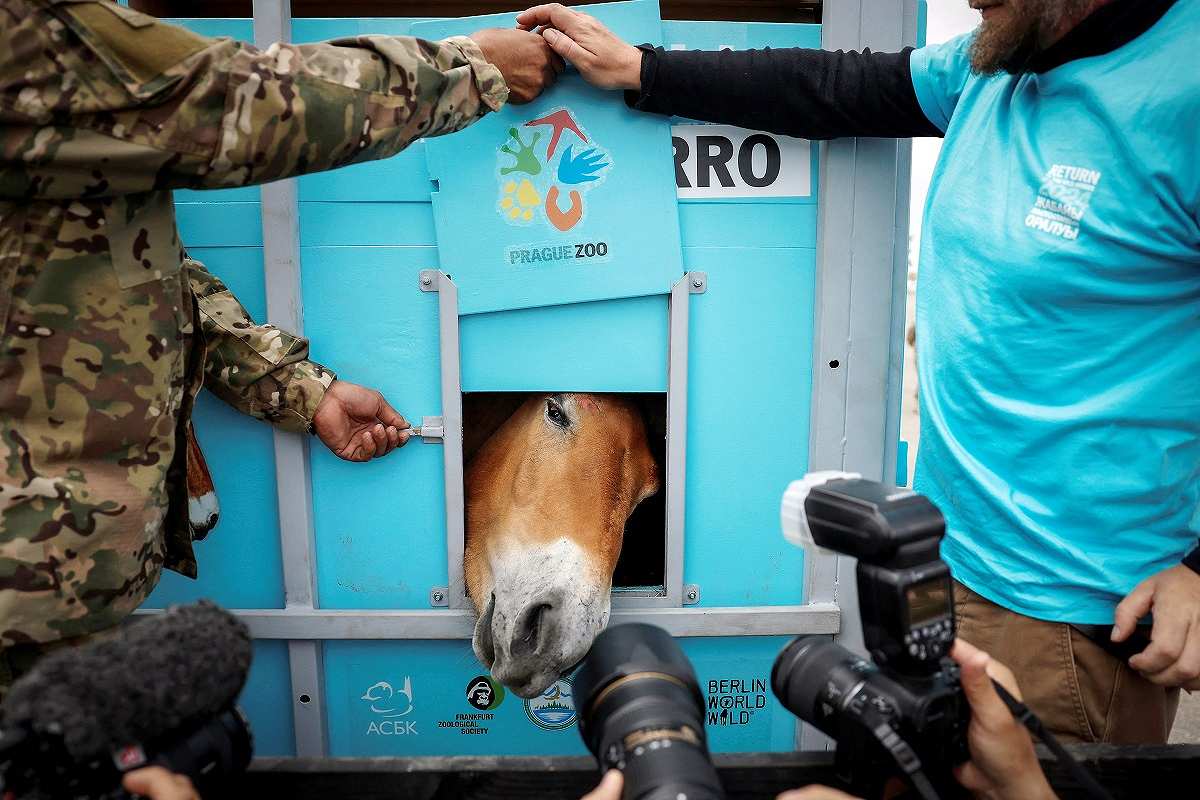
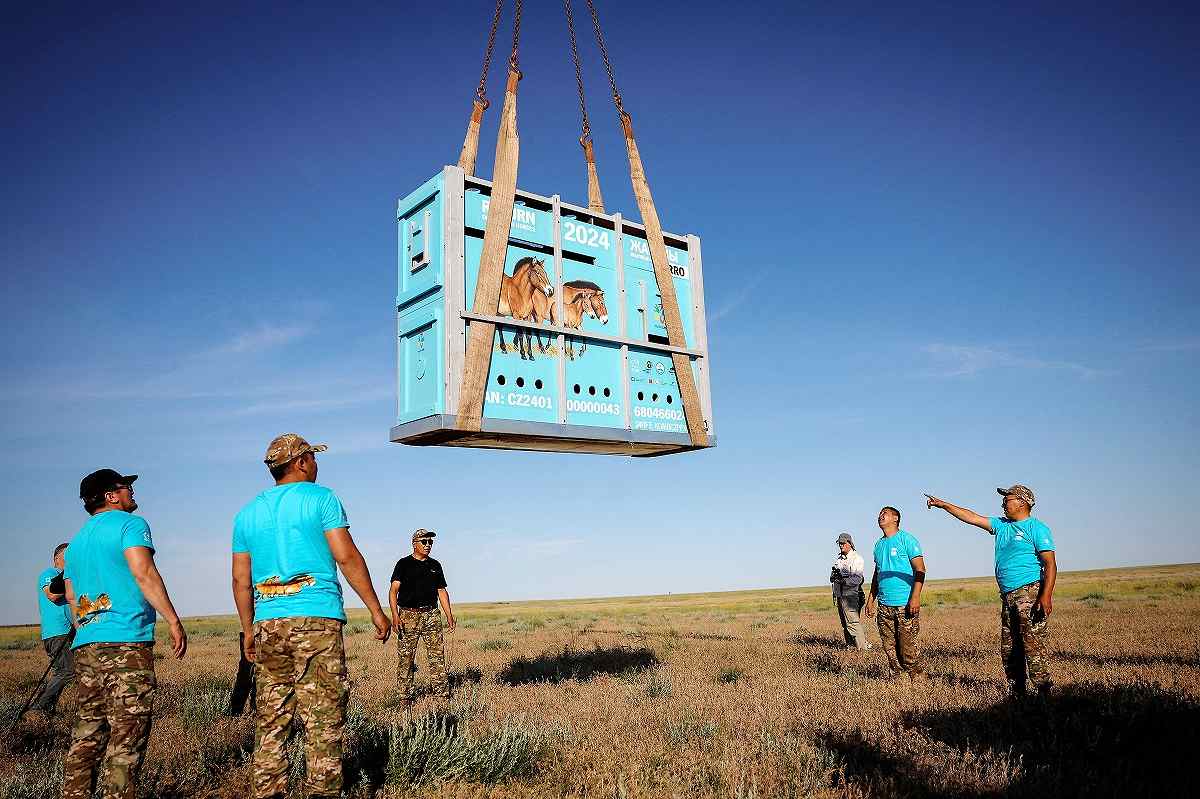
Top: A Przewalski’s horse peeps out of a container on its way to the Alibi field station and reintroduction center in the Altyn Dala area after being unloaded from a Czech military airplane, at the airport near Arkalyk, Kazakhstan, on June 4. Bottom: Rangers and zoo keepers unload a container containing a horse at the center.
In early June, the first group of seven arrived. Around another 40 are planned for the next five years.
“These are the first wild horses which have touched soil in the steppes of central Kazakhstan in hundreds of years,” said Prague Zoo director Miroslav Bobek.
“We still have a long way to go, but this was a historic moment.”
Czech army planes transported the horses — a stallion and six mares — on flights from Prague and Berlin to the Kazakh city of Arkalyk, from where they traveled seven hours by truck, accompanied by zoo keepers.
The horses will stay in an acclimatization enclosure for a year to learn to find water and food during the steppe’s harsh winters.
Przewalski’s horses had disappeared from the wild by the end of the 1960s, but remained in captivity. They have already been reintroduced in China and western Mongolia, where the population now numbers 850.
In Kazakhstan, the reintroduction is part of conservation efforts — the horses eat a wide variety of grasses, in turn spreading seeds.
“It is quite important to have these wild horses,” said Albert Salemgareyev, lead specialist for the Association for the Conversation of Biodiversity in Kazakhstan.
"Science & Nature" POPULAR ARTICLE
-
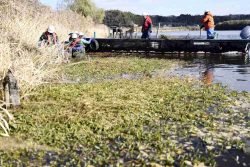
‘Fiercest, Most Damaging Invasive Weed’ Spreading in Rivers, Lakes in Japan, Alligator Weed Found in Numerous Locations
-

Univ. in Japan, Tokyo-Based Startup to Develop Satellite for Disaster Prevention Measures, Bears
-

Japan Set to Participate in EU’s R&D Framework, Aims to Boost Cooperation in Tech, Energy
-

Tsunami Can Travel Vast Distances Before Striking, Warn Japanese Researchers
-

Japan’s H3 Rocket Failed in Latest Launch, Says Official
JN ACCESS RANKING
-

BOJ Gov. Ueda: Highly Likely Mechanism for Rising Wages, Prices Will Be Maintained
-

Core Inflation in Tokyo Slows in December but Stays above BOJ Target
-

Osaka-Kansai Expo’s Economic Impact Estimated at ¥3.6 Trillion, Takes Actual Visitor Numbers into Account
-

Japan Govt Adopts Measures to Curb Mega Solar Power Plant Projects Amid Environmental Concerns
-

Major Japan Firms’ Average Winter Bonus Tops ¥1 Mil.




